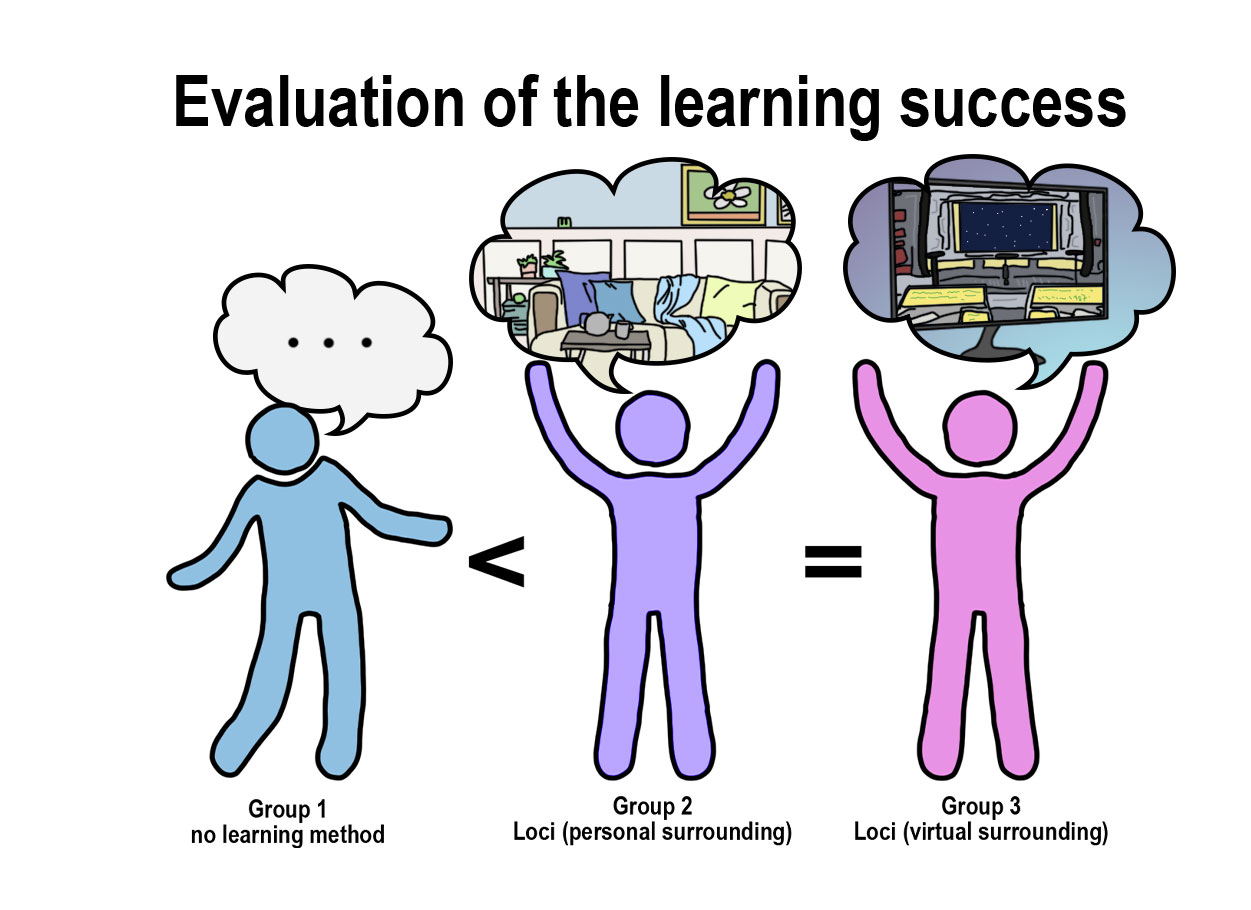Building a memory palace in minutes: Equivalent memory performance using virtual versus conventional environments with the Method of Loci
Legge, E. L. G., Madan, C. R., Ng, E. T., & Caplan, J. B. (2012). Building a memory palace in minutes: Equivalent memory performance using virtual versus conventional environments with the Method of Loci. Acta Psychologica, 141(3), 380-390.
Background
The Method of Loci uses a familiar environment as a mnemonic scaffold and involves visuospatial navigation. Until now, it was not known whether and under which conditions virtual environments can be used as mnemonic scaffolds in the Method of Loci.
Goal & Main Research Question
The goal of this study was to find out whether virtual environments can be used as mnemonic scaffolds for the Method of Loci.
The main research question is: Does learning success with the Method of Loci differ when using a recently explored virtual environment as a mnemonic scaffold instead of a familiar environment?
Methods
142 students aged 17 to 27 participated in the experiment. They were divided into 3 groups:
- The Control groupthat did not receive any instructions on memory techniques
- The Conventional Method of Loci Group, which used the Method of Loci with a familiar environment (such as their own apartment)
- The Virtual Method of Loci Group, which used the Method of Loci with a virtual environment explored shortly before the memory task
Participants were asked to memorize and recall 10 lists of 11 randomly selected words each using the assigned method.
Results
The surprising results showed that the Virtual Method of Loci Group achieved the same memory performance as the Conventional Method of Loci Group after only 5 minutes of training.
Both variants of the Method of Loci were also effective when the order of the to be remembered words was relevant.
All groups were significantly better at remembering words that could be pictured well than those for which this was difficult.

Relevance
Virtual environments can be successfully used for both practical applications of the Method of Loci and research on mnemonic strategies.